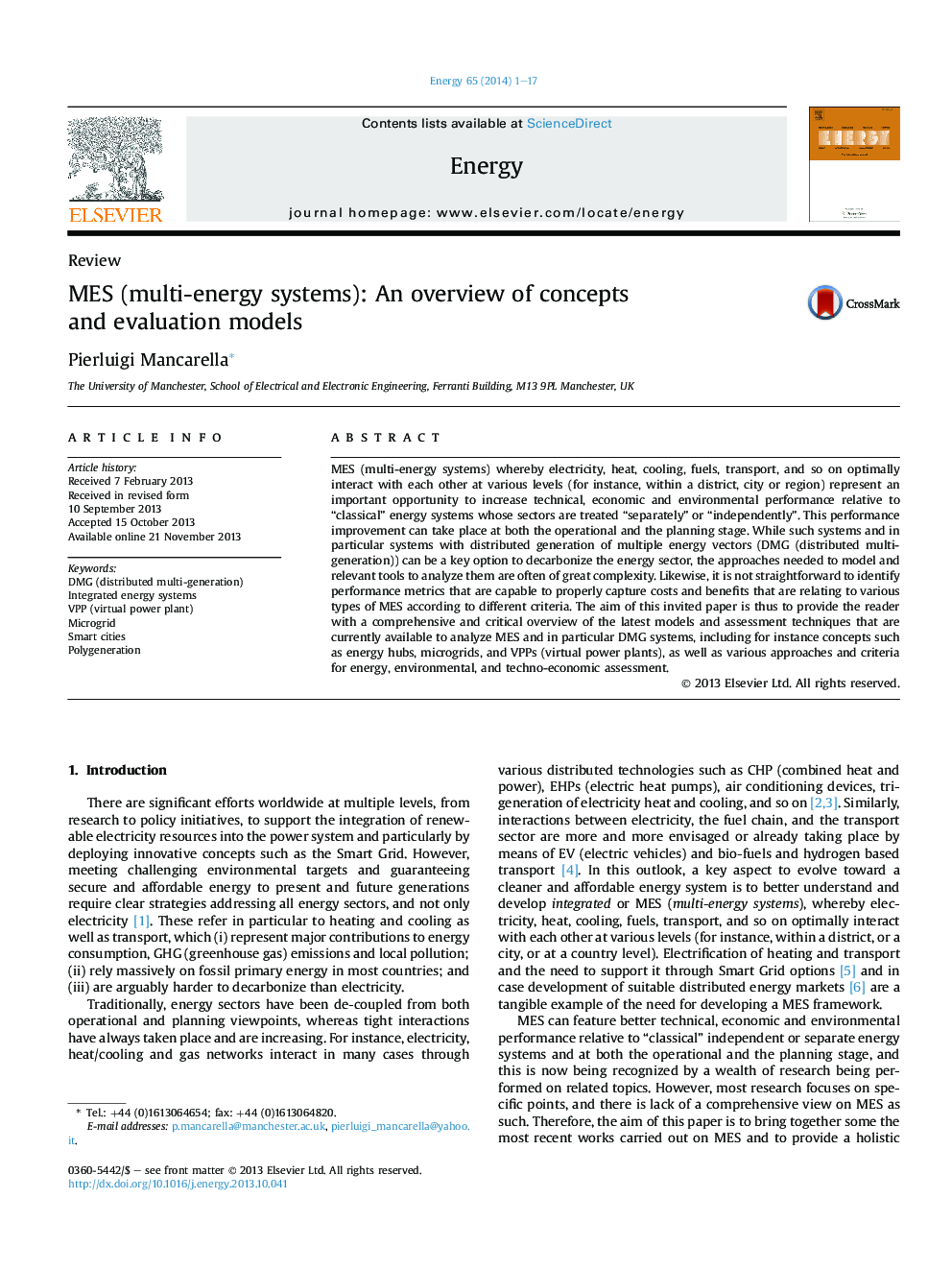| Article ID | Journal | Published Year | Pages | File Type |
|---|---|---|---|---|
| 1732658 | Energy | 2014 | 17 Pages |
•MES (multi-energy systems) optimally integrate different energy sectors.•This invited paper provides a comprehensive MES overview from various perspectives.•MES can enhance performance relative to traditionally “separate” energy systems.•Key concepts discussed include aggregation models and multiple assessment criteria.
MES (multi-energy systems) whereby electricity, heat, cooling, fuels, transport, and so on optimally interact with each other at various levels (for instance, within a district, city or region) represent an important opportunity to increase technical, economic and environmental performance relative to “classical” energy systems whose sectors are treated “separately” or “independently”. This performance improvement can take place at both the operational and the planning stage. While such systems and in particular systems with distributed generation of multiple energy vectors (DMG (distributed multi-generation)) can be a key option to decarbonize the energy sector, the approaches needed to model and relevant tools to analyze them are often of great complexity. Likewise, it is not straightforward to identify performance metrics that are capable to properly capture costs and benefits that are relating to various types of MES according to different criteria. The aim of this invited paper is thus to provide the reader with a comprehensive and critical overview of the latest models and assessment techniques that are currently available to analyze MES and in particular DMG systems, including for instance concepts such as energy hubs, microgrids, and VPPs (virtual power plants), as well as various approaches and criteria for energy, environmental, and techno-economic assessment.
